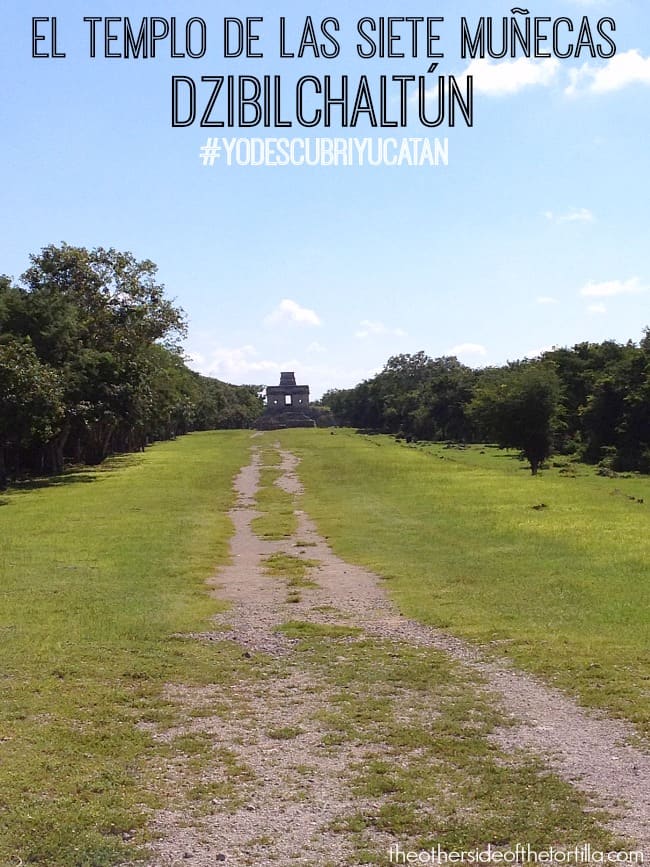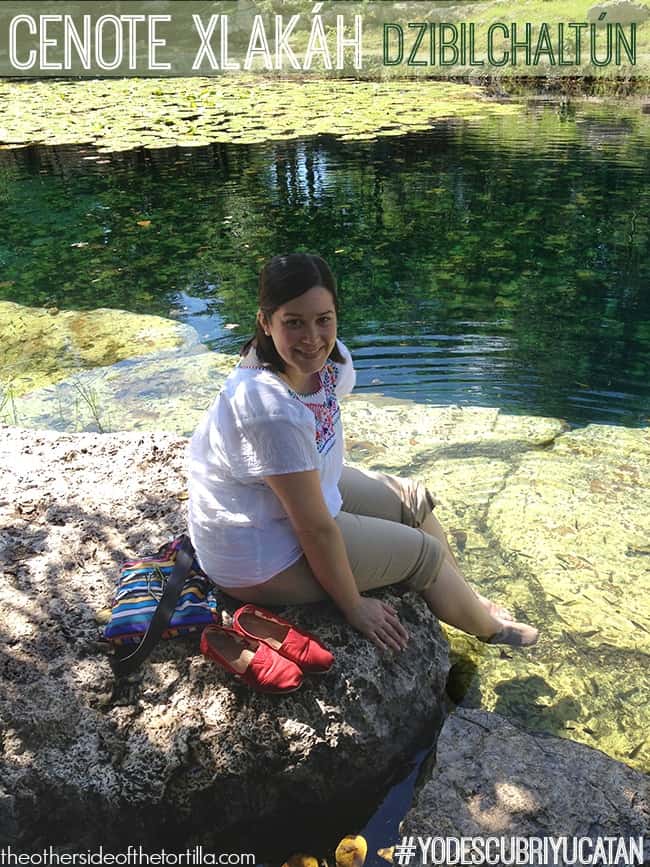Dzibilchaltún is one of the oldest Mayan cities and is located near the Northern coast of the state of Yucatán, about 10 miles North of Mérida. The name Dzibilchaltún (pronounced Tsee-beel-chahl-toon) means “the place where there is writing on flat stones” in the Mayan language. In September, I traveled to Mérida, Yucatán for four days to explore and Dzibilchaltún was one of my favorite discoveries on the trip.
If you love ruins, archaeology and Mayan history, this site is a must-see during a visit to the state of Yucatán. We had a wonderful guide during our visit who spoke Spanish, English and Maya and was very knowledgable not only about the history of the site, but also explained the language roots and word evolution, which I found particularly interesting.
The archaeological site at Dzibilchaltún is less well-known to international tourists in comparison to sites such as Chichen Itzá, but is well worth the visit thanks to the knowledgable guides, the swimming area in the cenote and the fact that it’s less crowded than some of the larger sites. It’s also not too far from Mérida, making this site a great place to visit if you don’t want to take an entire day to travel to see an archaeological site in Mexico. There’s plenty to learn and appreciate here and I hope to be able to return again with my family.
It’s thought that Dzibilchualtún’s earliest residents inhabited the area around 500 B.C., with a major growth period from about 600-900 A.D. when it had a population of around 20,000. The concentric archaeological site, which is approximately 9 square kilometers (about 5.6 square miles), retains its original sacbés (also spelled “sak be,” the Mayan word for white roads), lined with lol be (the Mayan word for roadside wild flowers), that stem from the center of the site and continue outward to the periphery.
Due to the extensive living areas of Dzibilchaltún, the site contributed to the conceptual change from ceremonial center to urban center in this area. The site was primarily inhabited by bureaucrats and religious elites, such as high priests.
During the equinoxes in March and September, an important archeaological-astronomical phenomenon occurs: The rising sun illuminates the doorway of the Templo de las Siete Muñecas (Temple of the Seven Dolls; named for the seven human-shaped clay figurines excavated from the inside of the temple), creating a spectacular view of light and shadow on the West side of the temple. I visited Dzibilchaltun about a week after the equinox so I didn’t get to view it in person, but I’d love to return some day to see it. According to historians, the illumination of the temple during the spring equinox signified the time to plant crop seeds, and the fall equinox signified the time to begin harvesting. Have a 360 degree look at the temple:
One of the sacbés leads to a cenote, a sinkhole created by a subterranean river, called Xlakáh (sometimes also spelled Xlacah or X’lacah), which in the Mayan language means “pueblo viejo” in Spanish, or “old town” in English. Items made of stone, wood and bone have been excavated from this cenote over the years, giving archaeologists more clues to the civilization that inhabited Dzibilchaltun many centuries ago.
Today, visitors can take a swim in the cenote or sit along the edge to stick their feet in the water. A pair of water shoes would be a great investment if you plan to visit and enjoy swimming in the cenote. There are some small fish in the cenote. There’s also plenty of shaded area around the cenote to stay out of the sun if it’s hot when you visit.
Another interesting part of the archaeological site is the Capilla Abierta (the Open Chapel), constructed between 1590 and 1600 by the Franciscans, who celebrated mass in Latin and introduced Catholicism to the Mayan people. The large chapel is located in the center of Dzibilchaltún and is further evidence of the size of the population which required such a large religious building. The nave, which no longer exists, was likely to have had a palapa-style thatch roof, according to historians. The juxtaposition of the Franciscan chapel next to the ancient Mayan ruins is quite stunning, and a peek into the past as you imagine how the city changed from a Mayan ceremonial center to a more modern city after the Spaniards arrived. The stones used to build the chapel and some of the more “modern” buildings come from the deconstruction of the original Mayan structures that existed before the Franciscans arrived.
Also near the chapel is a large open area opposite the palace. The acoustics are incredible and if you stand in the middle of the open area and clap or make any noise, you can hear a resounding echo. When you stand here and close your eyes, you can imagine the ceremonies that must have been held here by the Mayans.
Information and tips for visiting Dzibilchaltún:
Location
The entrance to Dzibilchaltun is located at km 14 on the Mérida-Progreso highway. The site is open to visitors from 8 a.m. to 5 p.m. daily. It is approximately 10 miles North of Mérida.
Cost
Mexican citizens can visit for free on Sundays with ID; General admission is $118 MXN for international visitors and $91 for Mexican citizens. Admission for children under the age of 13 is $6 MXN, and $18 MXN for senior citizens (tercer edad) with an INAPAM credential. On holidays, admission is typically half-price (except for children and senior citizens with INAPAM). Admission prices listed are as of September 2013.
Weather
I visited in the morning during the end of September and the weather was hot and humid (but not uncomfortably so). If you are visiting during the middle of the day or if the weather is especially hot, I recommend having an umbrella to shade yourself and plenty of bottled water to drink.
Gift shop and restrooms
There is an indoor gift shop and clean, modern bathrooms at the entrance to the ruins.
Swimming
If you plan to swim in the cenote, be sure to have a swimsuit and towel, as towels are not provided. Swim at your own risk; there are no lifeguards on duty and the rocks can be slippery. Water shoes would be great to have if you plan to swim as well.
Disclosure: I traveled to Mérida and visited Dzibilchaltún as a guest of the Yucatán Tourism Board to get to know the area during Ki-huic, the Feria Turística del Mundo Maya. All opinions are my own.
7



Leave a Reply